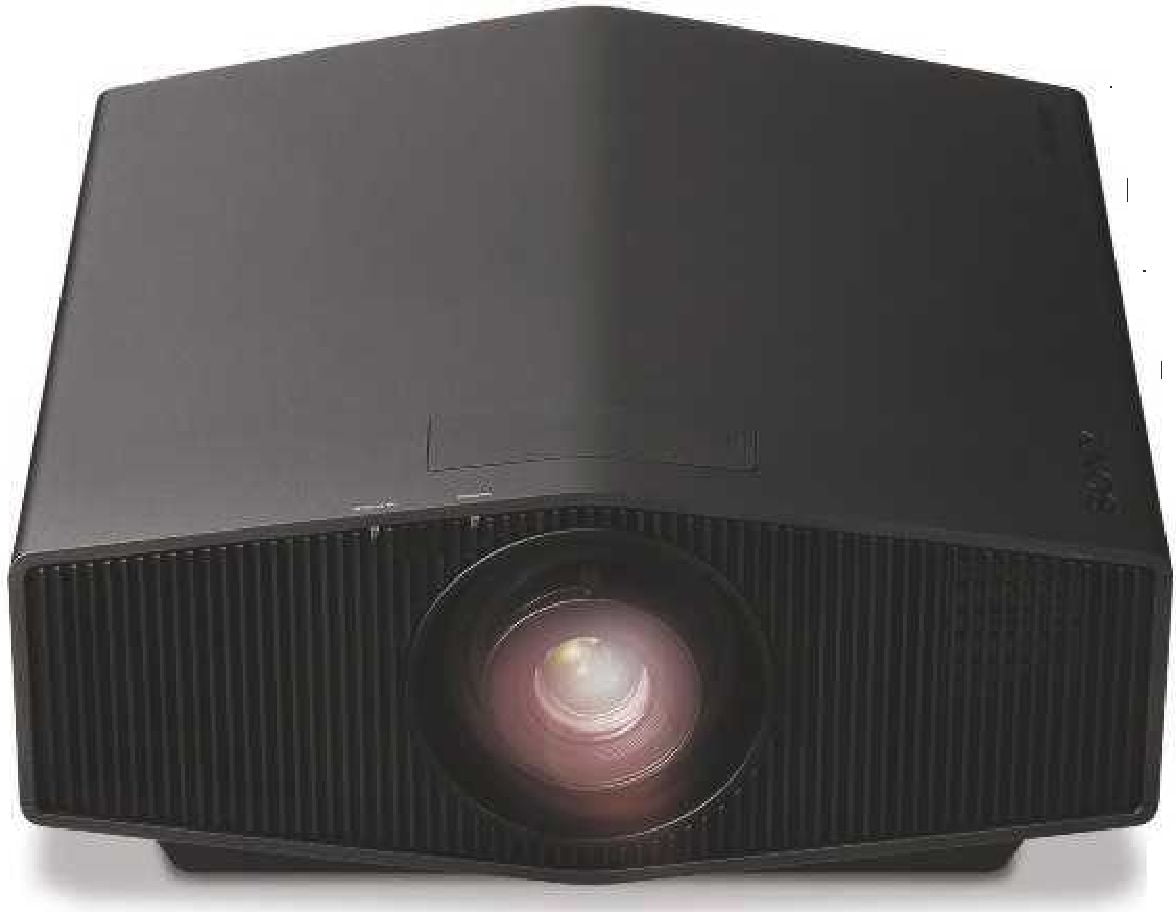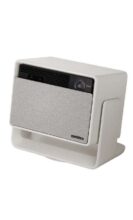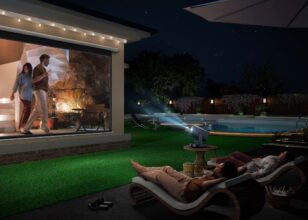Sony VPL-XW5000ES Review: A True 4K Laser Projector at an Affordable Price
The Sony VPL-XW5000ES stands out as the market’s most affordable laser projector with true 4K resolution, and it’s as impressive as it sounds.

Exceptional 4K Laser Technology
Spending 70,000 SEK on a projector might seem steep, but the Sony VPL-XW5000ES justifies this cost with its cutting-edge laser technology. Traditionally, a combination of a laser light source and a true 4K resolution panel has been priced much higher. This makes the XW5000ES a relatively cost-effective option.
Sony, along with JVC, is among the few manufacturers that offer home theater projectors with true 4K resolution. This means they don’t rely on optical tricks like pixel shifting to simulate 4K, ensuring that all pixels hit the screen simultaneously, resulting in a sharper, more dynamic image without motion blur or lag.
POSITION: Sony’s entry-level projector for 2022
PEERS: Epson EH-LS12000B; JVC DLA-NZ7
WEBSITE: www.sony.co.uk
Processing Power and Cost
While a true 4K panel offers superior picture quality, it also requires significant processing power and efficient cooling, contributing to the higher cost and larger size of the projector. This is a key reason why many manufacturers avoid producing true 4K projectors.
The Sony VPL-XW5000ES Features
Historically, Sony’s 4K projectors started around 50,000 SEK, but the XW5000ES is now their most affordable model. To keep the price down, this model doesn’t feature Sony’s most advanced optics. For those, you would need to look at the XW7000, which is more than twice as expensive. However, the XW5000ES still offers impressive optics that maximize the potential of its laser light source, promising better color saturation, shades, and contrast.

Z-Phosphor Blue Laser Technology
Sony’s Z-Phosphor technology uses blue laser diodes and a yellow phosphor wheel to create white light, resulting in 25% more brightness than previous models. This light is then split into primary colors via a color filter, maintaining a stable color balance regardless of brightness. Unlike traditional lamp projectors, laser projectors like the XW5000ES start up almost as quickly as a TV, though not as fast as some other laser models.
Longevity and Brightness
Laser projectors offer significantly longer lifespans, around 20,000 hours compared to the 4,000-6,000 hours of traditional lamps. This means that even with daily use, the XW5000ES will last over 13 years. However, when the laser eventually fails, it cannot be replaced. The projector’s brightness of 2000 lumens, combined with dynamic iris, aims to deliver nearly infinite contrast.
Lacks Motorized Optics
One downside of the XW5000ES is the lack of motorized optics, meaning focus, zoom, and lens shift must be adjusted manually. This can be inconvenient, especially for users who switch between different aspect ratios frequently. However, it does feature blanking to ensure the image fits perfectly on the screen.
Dynamic Tone Mapping
Modern 4K projectors like the XW5000ES offer greater dynamic range in light and color, thanks to HDR technology. HDR enhances the contrast and color depth, but achieving the same effect on projectors as on TVs is challenging. Sony’s X1 processor, using machine learning, helps manage HDR dynamically, though it’s not perfect. Users may need to adjust HDR contrast settings to avoid overly bright highlights or dim overall brightness.
Reality Creation
Sony’s Reality Creation technology enhances HD images by upscaling them to 4K, using a massive image database to recognize and replicate patterns, resulting in higher resolution and fewer artifacts.

Outstanding Picture Quality
In testing, the XW5000ES delivers exceptional picture quality, with a significant improvement in brightness and sharpness over previous models. However, for optimal performance, professional calibration is recommended to achieve the most accurate color reproduction.
Phenomenal Image Performance
When tested, the XW5000ES produced phenomenal image quality. The increase in brightness from 1500 to 2000 lumens is noticeable, providing a powerful light output comparable to the much more expensive VW790. While other projectors may offer higher brightness, the XW5000ES is ideal for dedicated home theater rooms rather than regular living rooms. Under the right conditions, it’s among the best projectors available.

Calibration Is Essential
Before calibration, the Sony projector had a delta error of 3 in grayscale, which is good but not excellent. The color space had a deviation of 2.4, which is acceptable but ideally should be closer to 1. Professional calibration significantly improved the performance, reducing the delta error to 0.6 in grayscale and 0.7 in color space, resulting in a perfectly neutral image.
Post-Calibration Performance
After calibration, the animated series Arcane on Netflix showcased deep, realistic colors and remarkable HDR lighting effects. Earth Moods on Disney Plus appeared stunningly lifelike. Reality Creation was set at 30 on a 0-100 scale for optimal sharpness without looking artificial.

Motionflow and HDR Handling
MotionFlow technology ensures smooth motion even with 4K content, while the True Theatre mode preserves the original frame rate of films. Although HDR effects look impressive, Sony’s tone mapping has limitations, often requiring adjustments to avoid overly bright highlights or dim overall images.
Upscaling HD Content
The projector also excels at upscaling Full HD content. For instance, Fantastic Beasts: The Crimes of Grindelwald on HBO Max looked exceptionally sharp, thanks to Reality Creation.
Verdict
Sony has consistently produced excellent projectors, and the VPL-XW5000ES pushes the boundaries of what’s possible under 100,000 SEK. It offers exceptional contrast, impressive brightness, and stunningly realistic colors, creating an immersive cinema experience at home. Despite some limitations, such as non-motorized optics and HDR tone mapping quirks, it remains one of the best projectors available for home theaters, providing a truly remarkable viewing experience.
When you purchase through links on our site, I may earn an affiliate commission. Here’s how it works.
SPECIFICATIONS
3D: No
4K: Yes. 3,840 x 2,160
HDR: Yes. HDR10; HLG
CONNECTIONS:2 x HDMI inputs; Ethernet port; USB port; 12V trigger; IR input; RS-232C
BRIGHTNESS (CLAIMED): 2,000 Lumens
CONTRAST (CLAIMED): ‘Infinity to 1’ (dynamic contrast)
ZOOM: 1.6x
DIMENSIONS: 460(w) x 200(h) x 472(d)mm
WEIGHT: 13kg
FEATURES: SXRD projector technology; laser phosphor light source; claimed average life of 20,000 hours; 24dB claimed fan noise; Wide Dynamic Range Optics; X1 Ultimate for Projector processor; Motionflow; Reality Creation; Object-based HDR Remaster; Dynamic HDR Enhancer; Input Lag Reduction; 1.38-2.21:1 throw ratio; manual lens controls for zoom, shift and focus; IMAX Enhanced; Control4, Crestron, Savant and AMX support
Sony | VPL-XW5000ES 4K SXRD Laser Projector – Product Overview
Bring true 4K HDR entertainment into your home with the VPL-XW5000ES (1), a native 4K laser projector with 2000 lumens of ...
NEW Sony VPL-XW5000ES - Home Theater Entertainment with a Native 4K, High-Value Laser Projector!
This overview is on the VPL-XW5000, which will be the new entry-level Sony front-projector. Subscribe!












